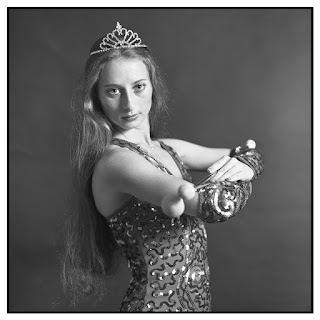A pigment inkjet print on fine art paper.
© PN Parsons
Beyond the occasional Mama Mamiya blog post there is also my desire to produce a fine black and white print. A print that has value well beyond its production cost. A photographic image which can be framed and hung on a wall, given as a gift or if I'm really lucky can be sold. The fine print is considered the cumulation of one's efforts.
Producing work which reflects one's vision and creates a feeling of satisfaction also requires diligence and care. To quote David Bayles and Ted Orland in their book Art & fear, "Vision is always ahead of execution, knowledge of materials is your contact with reality and uncertainty a virtue."
Renowned American photographer Ansel Adams (1902-1984) is quoted to have said something akin to 'anything which is easy to produce often has little value.'
Using an 8x10 view camera Adams is best known for scenes of western United States. He was no doubt reflecting on the major effort required to create a fine image, where the value of the print itself often reflects the artistic vision, skill and tenacity of the photographer.
One way to reach that feeling of artistic accomplishment and to create a fine print (the end goal) is to have a consistent work flow.
To that end a consistent work flow is perhaps the best way to make fine images. A work flow which has a specific goal and avoids a willy-nilly random approach to creative photography.
Producing a collection of negatives has for me become an ongoing practice. It is better to be out there shooting consistently than waiting for a worthy subject to appear. Just shooting with the TLR often can be rewarding enough. The end goal of the making of a print can be put off until actual photographs are needed.
In my work I use the Mamiya C220 TLR system. I avoid experimenting with different film, oddball developers, plastic cameras and gadgets and use Ilford HP5 film and Kodak D-76 (diluted1:1) as my developer and Kodak powder fixer. The primary photography focus is the subject. This is what I like doing. It is my goal.
This is not to say a photographer cannot try different equipment and lenses, films or developers, if their work is of an experimental nature.
A younger or new to film photographer has to experiment to get use to equipment and materials. Every photographer's goal is unique.
The ease at which a digital photographer can produce work has in my opinion cheapened the value of the digitally created image for the digital world compared to film photography in which the goal is to create a fine print.
While many are creating good work digitally they are perhaps not being as well paid or rewarded as their old school film brethren or not being paid at all. (I make the assumption that the reader hopes to be able to sell their work or at least benefit from it)
The resurgence of traditional emulsion photography is no doubt a backlash caused by the soulless nature of digital photography. It is just a feeling that you have when working with film. A kind of cachet.
Getting back to producing a fine print the TLR photographer has the choice to make a traditional silver print in a darkroom or scanning the negative and making a pigment print on archival paper. Both approaches require a consistent work flow with a knowledge of equipment and material.
Current practices and production workflow at Mama Mamiya is fairly consistent:
- A clear idea of subject reflecting the vision and feelings of photographer.
- Knowing the workings of the Mamiya TLR camera, lenses and accessories. (find out what the exposure adjustment scale on the camera body really means) If you have the resources get the shutter on your lenses cleaned and checked for accuracy.
- Use the same film type all the time and get to know its quirks and quarks. In our case it is Ilford HP5.
- Use an incident light meter and select the most appropriate exposure for the subject and lighting. Use a filter to reflect your vision. Ansel seems to have been fond of the red filter as witnessed by the black skies in many of his pictures.
- Develop film using D76 or equivalent. I like Kodak Fixer with hardener and not Ilford's non-hardening varieties. A hardener cuts down on scratches when water is wiped from washed film with a squeegee but requires a longer wash time.
- Scan negative and make light/dark/contrast adjustments and do dust spotting. Send scanned file or negative to a photo lab for printing on traditional silver paper or to a digital lab for printing on archival paper using pigment inks. Alternatively you can set up your own darkroom and make silver prints or buy a photo printer. I recommend outsourcing in both instances as the do-it-yourself methods each come with their own can of worms and can be both expensive and frustrating.
Like everything in life nothing is set in stone. This approach to TLR photography works for me. All photographers live and work in a myriad of situations often with limited resources. In my case I like to shoot as much as possible and amass a negative collection.
It is very difficult for art photographers to exhibit, sell or have their work published. Maybe it is better to produce several really good fine prints a year for your own walls than giving up prematurely due to limited commercial success or lack of artistic fulfilment.
Following a consistent path has its own rewards. In the end you will have a large or small collection of fine prints. Your artistic vision and desires have been met in the value of the prints both to yourself and hopefully to others.





